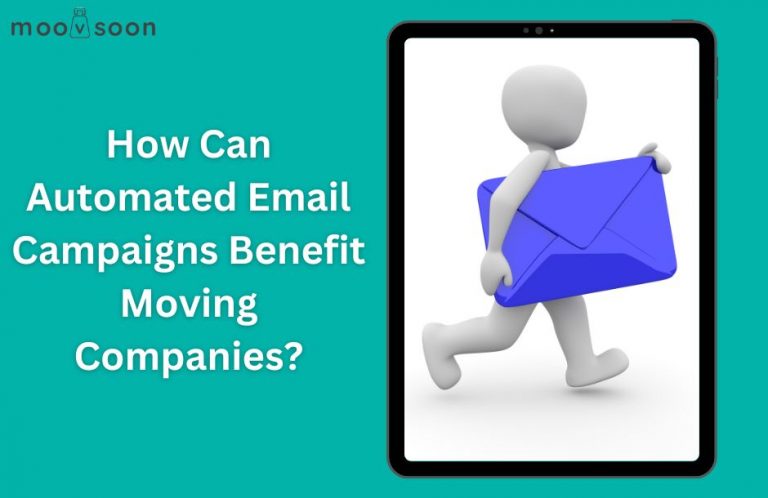How Can Moving Companies Identify Their Target Market?
In the ever-evolving moving industry, understanding your target market is crucial for success. Why is this important? Knowing your ideal clients allows you to tailor services that truly meet their needs, enhancing their satisfaction. As trends shift, such as the rise in remote work leading to increased relocations, businesses must adapt to remain competitive.
Analyzing customer demographics like age and income helps shape effective marketing strategies, ensuring you reach the right audience. With a clear view of who your customers are, you can position your services strategically, driving growth and standing out in a crowded market. Embrace these insights to thrive in the moving industry.

What defines a target market in the moving industry?
A target market in the moving industry is defined by identifying specific groups of consumers who are most likely to require moving services. This can include individuals or families relocating due to job changes, students moving to or from college, military personnel, and businesses needing commercial moving services. Understanding the target market involves analyzing demographics such as age, income level, location, and lifestyle preferences.
For instance, young professionals might be targeted for urban moves, while families may require services for suburban relocations. Additionally, businesses might need specialized equipment handling. Identifying these segments helps moving companies tailor their marketing strategies, service offerings, and pricing to better meet the needs of each group, ultimately enhancing customer satisfaction and business growth.
Why is market research vital for moving companies?
Market research is essential for moving companies as it enables them to identify and understand their target market effectively. By analyzing demographic data, lifestyle patterns, and consumer behaviors, moving companies can tailor their services to meet the specific needs of different customer segments.
This research helps in determining the most profitable areas to focus on, such as urban versus rural locations, and assists in creating targeted marketing strategies. In addition, understanding competitors and industry trends through market research allows companies to position themselves uniquely in the market, offering services that stand out.
Additionally, market research provides insights into customer preferences and pain points, allowing companies to improve service offerings and customer satisfaction. This not only helps in attracting new customers but also in retaining existing ones by building long-term relationships.
How do surveys help understand customer preferences?
Surveys are an essential tool for moving companies to understand customer preferences. By collecting feedback on various aspects such as service quality, pricing, and specific needs, companies gain insights into customer expectations. This information helps tailor services to meet client demands effectively.
Surveys also reveal trends in customer behavior, such as preferences for eco-friendly practices or digital platforms for booking. This data allows moving companies to adjust their strategies, ensuring they stay competitive and relevant in the market. By leveraging survey results, companies can improve customer satisfaction and loyalty.
What role does competitor analysis play in market research?
What role does competitor analysis play in market research? It is vital for understanding market dynamics and enhancing business strategies. Below are five key aspects of competitor analysis:
- Identify Strengths and Weaknesses: Understanding competitors’ strengths helps pinpoint areas where your business can improve or stand out, allowing for targeted service offerings.
- Monitor Pricing Strategies: Keeping tabs on competitor pricing helps in adjusting your rates to remain competitive while ensuring profitability.
- Spot Market Gaps: Analyzing competitors reveals unmet customer needs, guiding you in developing unique services that elevate your brand.
- Evaluate Marketing Approaches: Observing competitors’ advertising techniques provides insights into effective audience engagement and emerging market trends.
- Enhance Decision-Making: Competitor analysis informs strategic decisions, fostering growth and innovation while establishing your brand as a leader.
Competitor analysis is crucial for navigating the market landscape, helping businesses identify opportunities and making informed choices for success.
What are effective market segmentation strategies?
Here’s a list of key approaches:
- Demographic Segmentation: This strategy involves dividing the market based on age, gender, income, and education. By understanding these factors, businesses can tailor their offerings to meet specific needs, enhancing customer satisfaction.
- Geographic Segmentation: This approach targets customers based on their location. By analyzing areas with high demand, companies can allocate resources efficiently and maximize service delivery, leading to improved market reach.
- Psychographic Segmentation: This method focuses on customers’ lifestyles, interests, and values. Understanding these traits allows businesses to create personalized marketing campaigns that resonate deeply with their audience.
- Behavioral Segmentation: This strategy examines customer behaviors, such as buying patterns and brand loyalty. By analyzing these behaviors, companies can develop targeted promotions that drive sales and encourage repeat business.
Implementing these segmentation strategies is vital for businesses aiming to optimize their marketing efforts and improve customer engagement.
How does demographic segmentation benefit moving companies?
Demographic segmentation benefits moving companies by tailoring services to specific customer groups. This strategy allows companies to identify and focus on segments such as families, singles, or retirees, each with unique needs. By understanding the age, income, and lifestyle of their target market, moving companies can offer customized services, enhancing customer satisfaction and loyalty.
Effective segmentation strategies include analyzing local demographics, using customer surveys, and leveraging data analytics. For instance, a company might focus on young professionals in urban areas, offering efficient, budget-friendly moving options, while targeting families with all-inclusive packages that include packing and unpacking services.
Why is geographic segmentation important in this industry?
Why is geographic segmentation critical for moving companies? Understanding this aspect can significantly enhance service delivery. Here are five key reasons:
- Tailored Services: Geographic segmentation helps customize offerings to meet specific regional needs, ensuring customer satisfaction and relevance.
- Resource Allocation: Identifying high-demand areas allows businesses to allocate resources effectively, optimizing operational efficiency and profitability.
- Marketing Strategies: Targeting specific regions with tailored marketing campaigns increases engagement and brand visibility among potential customers.
- Understanding Preferences: Recognizing urban versus rural preferences enables companies to offer suitable services, enhancing customer experience.
- Opportunity Identification: Monitoring migration patterns reveals profitable areas for expansion, positioning the company advantageously in the market.
Geographic segmentation is essential for optimizing services, resources, and marketing, ultimately driving success in the moving industry.
How can companies define their ideal customer profile?
To define an ideal customer profile for moving companies, first identify key characteristics of the target market. Begin by analyzing demographic factors such as age, income, family size, and employment status. Typically, young professionals, families, and individuals experiencing life changes like job relocations or housing upgrades are prime candidates.
Next, consider geographic and psychographic elements. Focus on urban areas or regions with high mobility rates. Understand customer motivations, such as convenience, reliability, and cost-effectiveness, which influence their choice of a moving service. Utilize data analytics to assess past customer behavior, identifying common traits among satisfied clients.
Finally, create a detailed profile incorporating these factors, shaping marketing strategies and service offerings to align with the identified audience needs and preferences. This approach guarantees that moving companies effectively reach and engage their ideal customers.
What factors should be considered in customer profiling?
To define an ideal customer profile for moving companies, several factors should be considered. First, demographic information such as age, income, and family size helps in understanding the target audience. For instance, young professionals or families are often in need of moving services due to job relocations or housing upgrades.
Next, consider geographic location; urban areas might have different moving needs compared to rural areas. Additionally, psychographic attributes, like lifestyle and values, help in tailoring services to customer preferences. Finally, behavioral characteristics such as past moving frequency and service preferences offer insights into customer expectations.
How does understanding customer needs enhance services?
Understanding customer needs is essential for enhancing service quality and satisfaction in the moving industry. When moving companies effectively identify and cater to specific customer requirements, they can tailor their services to meet these demands, ultimately exceeding customer expectations.
Research indicates that 75% of customers are more likely to return to a service provider who understands their needs, according to a 2022 survey by CustomerThink. By gathering data on customer demographics, preferences, and feedback, companies can identify key trends that inform their service offerings. This data-driven approach allows businesses to create detailed customer profiles, ensuring they focus on their ideal clients and enhance overall service delivery.
What marketing strategies effectively reach the target market?
Digital marketing strategies that utilize personalized communication can boost customer engagement by up to 80%, effectively reaching potential clients online. This approach is essential for building meaningful connections and increasing trust and loyalty in your moving company.
A study by Epsilon in 2018 found that 80% of consumers are more likely to make a purchase when brands offer personalized experiences. Furthermore, research by Salesforce in 2020 indicated that 57% of consumers are willing to share personal data for personalized offers. By employing targeted digital marketing tactics, such as personalized emails and social media ads, businesses can create tailored content that resonates with their audience.
Incorporating these strategies not only improves customer interaction but also enhances conversion rates. According to HubSpot, companies that prioritize personalized marketing see an average increase of 20% in sales. This data underscores the importance of combining digital marketing with personalized communication to effectively reach and engage your target market.
How can digital marketing improve customer engagement?
How can digital marketing strategies enhance customer engagement for moving companies? The table below summarizes the various digital marketing methods and their impact on customer engagement.
| Method | Description | Benefits | Metrics to Evaluate |
|---|---|---|---|
| Social Media | Platforms like Facebook and Instagram, for creating an online community. | Builds trust, facilitates communication. | Likes, shares, comments. |
| Email Campaigns | Sending personalized emails to targeted audiences. | Keeps customers informed, fosters loyalty. | Open rates, click-through rates. |
| Content Marketing | Creating blogs and articles that provide valuable information. | Engages customers, boosts brand authority. | Page views, time on page. |
| Paid Advertising | Targeted ads on social media and search engines. | Reaches specific demographics effectively. | Conversion rates, impressions. |
Using these digital marketing methods, moving companies can significantly improve customer engagement. Each method provides unique advantages that help build relationships with potential customers, ensuring they feel valued and connected. By consistently evaluating performance metrics, companies can refine their approaches to maximize engagement and drive business success.
Why is personalized communication crucial in marketing?
Personalized communication is essential in marketing as it builds stronger connections with potential customers by addressing their specific needs and preferences. Effective strategies for reaching a target market include the use of targeted email campaigns and personalized social media interactions, which result in higher engagement rates. Personalization fosters trust and loyalty, leading to improved conversion rates and customer satisfaction.
Additionally, leveraging data analytics to understand customer behavior can enhance the personalization process, ensuring marketing messages resonate with the audience. This approach not only enhances brand perception but also drives business growth.
Conclusion
Understanding your target market is crucial for moving companies. By conducting a thorough analysis, you can identify ideal customers and understand their motivations. This insight helps you tailor your services to better meet their preferences and needs.
Recognizing what customers value most, be it affordability, reliability, or a seamless experience—is key. Use this understanding to refine your marketing strategies, ensuring they resonate with potential clients and highlight what sets your company apart from the competition.
Market dynamics are constantly changing, so ongoing analysis is vital. Regularly reassess your strategies to stay aligned with current trends and customer expectations. By remaining adaptable and informed, your moving company can exceed customer needs and build lasting relationships that propel your business forward.
Now is the time to take action. Evaluate your current approach and implement changes based on customer insights. This proactive stance will strengthen your brand’s position in the market and foster long-term success. Are you ready to elevate your moving company and truly connect with your customers?



